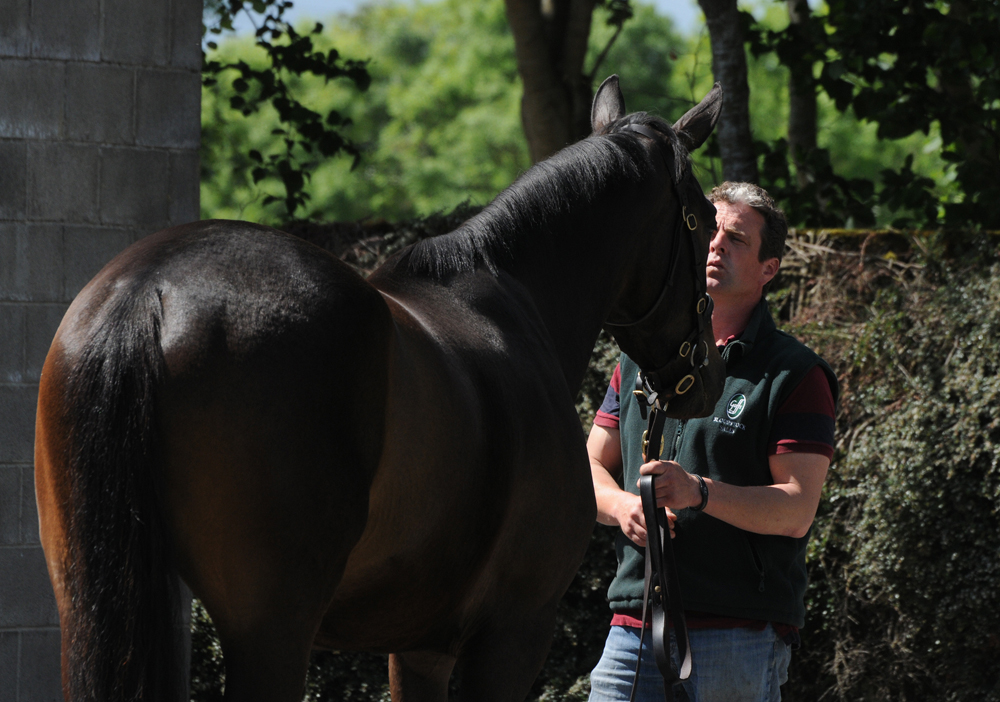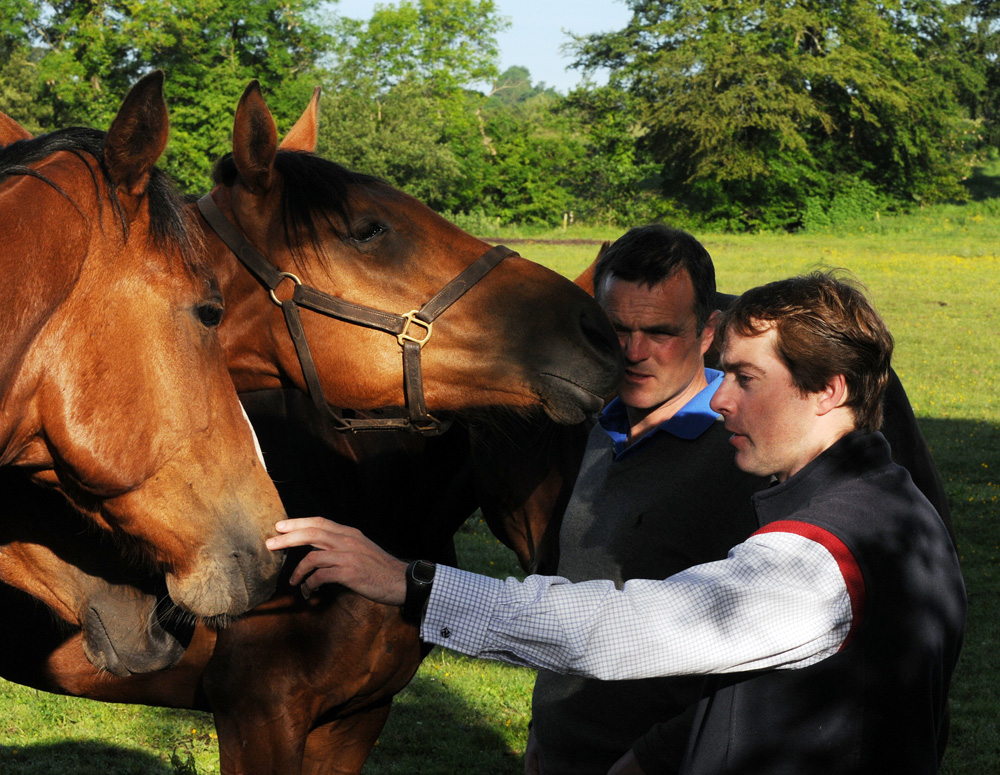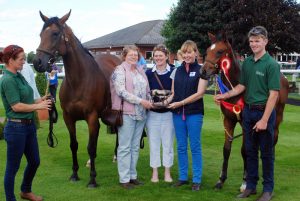The National Hunt store market, so long in the doldrums, has been hinting at a recovery for the last few seasons, but few could have predicted the riotous return to form of this summer, with even Sheikh Fahad Al Thani investing in a trio of untried jumpers.
A combination of events has led to the revival of fortunes, including the fact that fewer and better mares were bred from during the years when the twin spectres of over-production and global recession were most keenly felt. The lengthened production cycle of the jumping game means that the benefits of that selective approach are only now being fully realised and, coupled with an increase in the popularity of National Hunt racing and an extended buying bench, it has led to a significant buoyancy in the store sector.
The rise of the boutique horses-in-training sales has been such that a number of buyers are now unable to participate at the level demanded by the top prices at such auctions. The very sales which once dented the allure of the stores have become so successful that they have helped to push people back into the market of untried stock as increased demand means that not all potential jumping owners can be catered for with a proven horse.
“There is great demand from buyers – I honestly don’t know where the money is coming from,” says Harold Kirk, who buys jumpers for Willie Mullins’s powerful stable.
“DBS was strong to start with, then the Land Rover Sale was really good and the Derby Sale took it a step further. JP McManus is buying stores again, and he hadn’t for a few years, and Gigginstown House Stud helps to keep the market strong, but what was really noticeable was that the middle market was so strong this year.
“Horses that would have made €20,000 two years ago were making €40,000. The point-to-point men always buy in that bracket and they found it hard this year; €40,000 is a lot of money and I know owners who had that to spend but couldn’t and didn’t buy a horse.”

Peter Molony with a member of his Rathmore Stud draft at Goffs
While Tattersalls Ireland’s Derby Sale, the flagship store auction, is expected to be strong and duly delivered an 89% clearance rate and rise in aggregate by 29% to €14,282,000, a dramatic improvement was posted this year by its Irish rival, the Goffs Land Rover Sale, which recorded an extraordinary 92% clearance rate. With new members Kevin Ross and Peter Molony added to its National Hunt inspection team in 2012, Goffs has worked hard on improving the quality of horse on offer at its major jumps sale.
What was really noticeable was that the middle market was so strong this year; horses that would have made €20,000 two years ago were making €40,000
“I’ve rarely auctioned at a sale where the trade has been as strong at all levels as it was at the Land Rover Sale,” says Goffs’ Chief Executive Henry Beeby. “The clearance rate speaks for itself. There were multiple bidders on many horses and they were coming in above the reserves we had.
“About three years ago we took the decision to really focus in on the National Hunt market – Goffs had more of a reputation for the Flat – but we added to our selection team, increased our sponsorship and have been very pro-active in trying to attract horses to the sale. To see such strength in National Hunt is encouraging for all concerned, as Ireland especially was hit particularly hard a few years ago.”
For Peter Molony, who combines his Goffs’ role with running his own successful Rathmore Stud and managing a neighbouring property for Sheikh Fahad Al Thani, the strength of this year’s trade was no surprise.
He says: “I expected the store sales to be pretty strong on the back of such good trade for point-to-pointers. Many people looking for point-to-pointers couldn’t get in there so got involved in the stores instead.
“The quality is much tighter and the numbers are also tighter, which has made a big difference. At both the Land Rover Sale and the Derby Sale there were very few horses that you wouldn’t bother to look at on pedigree – it was much more concentrated.
“I think foal numbers will start to increase a little but a lot of the lower quality mares have been taken out of the system so any increase is likely to be fairly slow.”
The most expensive of Molony’s four purchases at the Derby Sale was a daughter of late champion sire King’s Theatre, who, at €92,000, was only the fourth-most expensive filly in the sale.
An advocate of the creation of a clearer progression for mares’ races in the National Hunt division, Molony, a member of the ITBA’s National Hunt Committee, adds: “I had a couple of orders for fillies and it was hard work to get one. There was definitely a noticeably much better demand for them this year, especially at the Derby Sale.
“All the extra Listed races and the ITBA Bonus Scheme have definitely helped, but I do think that now all these races are in the calendar there needs to be a proper pattern in place for them, which would be beneficial for all.”
On this side of the Irish Sea, trainer Tom Symonds has joined the TBA National Hunt Committee and is another staunch supporter of mares’ races. He has enjoyed notable success in this area with the likes of Midnight Belle and Tweedledrum.
“I love having fillies in the yard as they are the future of our industry – they are the ones who are going to produce the future stars, and as a trainer I’ll certainly be taking advantage of the increased opportunities for fillies and mares,” says Symonds, who bought a Robin Des Champs filly for owner/breeder Dominic Burke and will be training another for Sheikh Fahad. “The strength of trade for fillies at the Derby Sale was a huge positive. That has to be down to the programme. Now we’re even seeing Paul Nicholls with some fillies and mares in his yard.”
However, for trainers wanting to buy on spec, this year’s sales have been harder than ever.

Trainer Evan Williams looking at youngsters with Tattersalls Ireland’s Harry Fowler
Symonds continues: “It’s the desire to win on four days in March that is driving it. The resurgence of the store market is a real plus but it obviously makes it difficult for people wanting to find value in untried horses. You have to buy them for the tight type of owner, one who is prepared to give them a bit of time.
“I particularly like store horses – I think some who come from the point-to-point sales have been a bit highly tried and pushed hard. I even bought a few stores privately this year, including a yearling in Ireland. I’m lucky that we have the farm here so we have room to turn them out, and my father has a National Hunt broodmare.”
As a member of the Tattersalls Ireland inspection team and an owner, breeder and husband of a trainer, Harry Fowler is in a position to weigh up the pros and cons of the National Hunt game from all angles. There’s a definite sigh of relief as he reflects on the harder years endured recently by himself and fellow jumps breeders.
He says: “With National Hunt mares you really do have to take a long-term view and some of the mares are at the end of their careers by the time they’ve had good runners. Most breeders with a good mare to breed from stuck to their guns, even in the recession, and they are being rewarded now.
“For me personally, I took the view that we’d tighten up what we covered and then try to ride the storm. We covered four or five in 2009 and 2010, and now we’re covering ten or 12.”
The Fowlers’ Rahinston Stud, where Lorna Fowler now trains and where Harry’s father John, then mother Chich, previously held the licence, has a longstanding reputation for success with fillies, both as breeders and on the racecourse, with recent alumni including multiple back-type earner Mischievous Milly. Though she was sold to Oliver Sherwood, Harry is not averse to racing or leasing fillies.
“When we’re selecting fillies for the sale we’re probably a lot tougher on them than the geldings,” he notes. “If there’s a nice filly with a not very strong pedigree, we’d advise the breeder to race her, or lease her or syndicate her, rather than giving her away for €5,000 at the store sale, which is what those sort of fillies make. They are not as commercial as the geldings yet, but they are heading in the right direction.”
Fowler points to the increased number of fillies in the Derby Sale catalogue this time around on the back of an average sales price in 2013 which had almost doubled from the previous year.
The four-year-old horse in the store sale is nearly finished; the point-to-point men won’t buy them as they like to race them as four-year-olds
“Tattersalls Ireland wanted to support the grassroots so we sponsored some fillies’ point-to-points in Ireland with a €10,000 bonus for the final, which was won by an owner/breeder,” he says. “We wanted to establish the Derby Sale as a source for good fillies. Buyers have acted on that and started waving their hands in the air, resulting in greatly improved figures.”
Another area in which the company is starting to alter the catalogue composition is in the sale of two-year-old stores. Fourteen were catalogued this year, when once only three- and four-year-olds were offered. Harold Kirk, a regular buyer in France, where this is more commonplace, welcomes the initiative.
He says: “The four-year-old horse in the store sale is nearly finished. The point-to-point men won’t buy them as they like to race them as four-year-olds. The introduction of two-year-olds is the way forward and I think trainers will be happy to buy them. One of the mistakes this year was not selling all the two-year-olds in one section, but it’s early days and it will evolve.”
The store section of the DBS Spring Sales was topped this year by a two-year-old brother to maiden hurdle winner Aklan at £90,000 – and was bought by Kirk for that gelding’s trainer Willie Mullins – but not everyone is convinced that the two-year-old division will be highly sought after at the store sales.
“The two-year-olds will take a long time to take off,” believes Peter Molony. “The people buying them will be either pinhookers or end-users and at two they are still a little young for the end-users. I think it will be a good idea if it does get going because it will help to stimulate trade, but it will take time to take root.”
Whatever the outcome, the major players involved in the National Hunt market have shown that they are not afraid of introducing changes to help stimulate demand for their product. And in many cases they are now being well rewarded for this open-minded approach.
How the fillies are faring
The TBA’s National Hunt Committee is still waiting to hear if it will gain the requisite Levy Board funding to launch its proposed Mare Owners Prize Scheme (MOPS), which has been formulated to help drive buyers towards fillies at the sales.
Whether it gains approval or not, both the TBA and its Irish counterpart can draw satisfaction from the fact that the measures already implemented – an increased black-type programme in Britain and a fillies’ bonus scheme in Ireland – are begininng to help in this regard.
A filly by Robin Des Champs made the top ten when selling for €160,000 at the 2013 Derby Sale and though you had to scroll down 20 lots to find this year’s top-priced filly, it was another daughter of the same sire who sold for €110,000 to Highflyer Bloodstock.
Harry Fry went to €105,000 outside the ring for the late Whiteoak’s three-year-old daughter by Presenting, while just below the six-figure mark, Hannah Wall, Richard Lee and Peter Molony splashed out decent sums for fillies – again by proven sires – with two daughters of King’s Theatre joining another by Robin Des Champs on the list of more expensive females.
Slowly but surely buyers are latching on to the fact that it’s worth taking a chance on a filly, an opinion which has long been held by Harold Kirk, who says: “I look at everything in the catalogue – we don’t differentiate between fillies and geldings. The Mullins family has always been successful with fillies, both those they’ve bred and raced and those bought from the sales.
“The filly market is getting stronger – there are more races and more black-type opportunities. Even for point-to-points they are buying fillies now and those that show form are selling well at Brightwells. It’s going to be gradual and it takes time for people to tune in to fillies, but we are on the right track.”
For the time being, there are still far fewer fillies represented in the store sales – just 68 of the 243 lots catalogued at DBS (27.9%), 76 of 529 lots at Goffs (14.3%) and 83 of 440 stores at the Derby Sale (18.9%).
With a number of breeders choosing to race their fillies, a 50-50 split is unlikely ever to happen, but both vendors and sales companies need to work together in finding a way to include more fillies in catalogues.
Kirk sounds a note of caution to breeders and vendors in this regard, saying: “I hope down the line people will look after filly foals the same way they do colts. Breeders can be disappointed with a filly foal and I think sometimes they aren’t as well done for the sales, but people should be breeding from mares where it shouldn’t matter whether she produces a filly or colt. The mares have to be good enough to carry a filly.
“More and more trainers are buying fillies and bigger owners that never did before are also doing so. Having a mares’ race at the Cheltenham Festival helps – the big owners all want to win the big races so now they have to have a mare to compete.”



